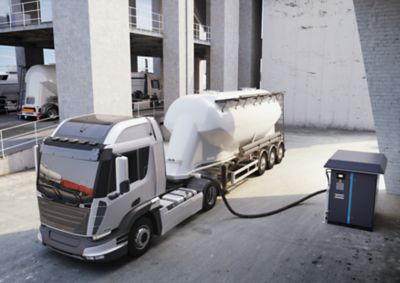Air compressor requirements for air tools: A comprehensive guide
When it comes to using air tools, having the right air compressor is crucial. Whether you're inflating tires, spray painting, or using an impact wrench, the air compressor you choose can make a significant difference in the performance and efficiency of your tools.
In this comprehensive guide, we will explore the air compressor requirements for air tools, helping you understand the key factors to consider and how to make the best choice for your needs.
Understanding air compressor requirements
Air compressors are essential for powering a wide range of pneumatic tools. However, not all air compressors are created equal, and selecting the right one involves understanding the specific requirements of your tools.
The primary factors to consider are the air volume (measured in Cubic Feet per Minute or CFM) and the air pressure (measured in Pounds per Square Inch or PSI) that your tools need.
Pressure regulators and their importance
Pressure regulators are critical components in air compressor systems. They reduce the supply pressure to a lower outlet pressure and maintain this outlet pressure despite fluctuations in the inlet pressure. This regulation ensures that your air tools receive the appropriate pressure for optimal performance and safety.
Factors to consider when selecting an air compressor
When choosing an air compressor, consider the following factors:
- CFM Requirements: Ensure the air compressor can deliver the required CFM for your tools.
- Duty Cycle: If you choose a compressor with a 100% duty cycle, you will always have air for your tools. This helps you avoid downtime.
- Air Receiver Tank: Think about using an air receiver tank. It can help lower CFM air compressors meet higher demand.
- Pressure Regulators: Ensure the air compressor has a reliable pressure regulator to maintain consistent pressure.
- Tool Usage: Consider the length of tool use and whether you will be using multiple tools simultaneously.
How do I determine what size air compressor to use for my air tools?
To determine the right size air compressor, you need to assess the CFM requirements of your tools and choose an air compressor that meets or exceeds these requirements. Additionally, consider the duty cycle and whether you will be using multiple tools at once.
What is CFM, and how does it relate to air compressor requirements for air tools?
CFM, or Cubic Feet per Minute, measures the volume of air an air compressor can deliver. It is crucial to match the CFM rating of your air compressor with the CFM requirements of your tools to ensure they operate efficiently.
Do all air compressors need air receiver tanks?
All air compressors need air receiver tanks to ensure consistent performance. Rotary screw compressors and variable speed drive (VSD) compressors generally require a small tank to maintain their efficiency. Reciprocating air compressors also need air receiver tanks to operate effectively.
Can a lower CFM air compressor with an air receiver tank be a more cost-effective option?
Yes, using a lower CFM air compressor with an air receiver tank can be a cost-effective option. The air receiver tank helps store compressed air, allowing the compressor to keep up with higher demand without the need for a higher CFM compressor.
What is CFM, and Why is it Important?
CFM, or Cubic Feet per Minute, is a measure of the volume of air an air compressor can deliver. It is a critical factor in determining whether an air compressor can adequately power your tools. Different tools have varying CFM requirements, and it's essential to match the CFM rating of your air compressor with the needs of your tools to ensure optimal performance.
Common air tool air requirements
Here is a table that outlines the typical CFM requirements for various air tools:
Air Tool |
l/s | CFM |
PSI |
Bar |
kPa |
Impact Wrench |
2 -2.5 | 3 - 5 |
90 - 120 |
6.2 - 8.3 |
620 - 830 |
Spray Gun |
2 - 4 | 4 - 8 |
30 - 50 |
2.1 - 3.4 |
210 - 340 |
Framing Nailer |
1 - 2 | 2 - 4 |
70 - 120 |
4.8 - 8.3 |
480 - 830 |
Air Grinder |
2 - 2.5 | 4 - 8 |
90 - 120 |
6.2 - 8.3 |
620 - 830 |
Sandblaster |
3 - 12 | 6 - 25 |
70 - 100 |
2 - 8 |
200 -800 |
Tire inflator |
0.5 - 1 | 1 - 3 |
100-150 |
2.06 - 2.76 |
193 - 234 |
Choosing the Right Air Compressor
Selecting the right air compressor involves more than just matching the CFM requirements of your tools. You also need to consider factors such as the duty cycle, the size of the air receiver tank, and whether you will be using multiple tools simultaneously.
The Role of Air Receiver Tanks
Air receiver tanks are used to store compressed air and can help lower CFM air compressors keep up with higher demand. They are particularly useful when using tools that require a continuous supply of air. Rotary screw compressors, VSD compressors, and reciprocating air compressors typically require air receiver to maintain consistent performance.
Conclusion
Choosing the right air compressor for your air tools is essential for ensuring optimal performance and efficiency. By understanding the CFM and PSI requirements of your tools, considering the role of air receiver tanks and pressure regulators, and taking into account factors such as duty cycle and tool usage, you can make an informed decision that meets your needs. Remember, the right air compressor can make all the difference in the performance and longevity of your air tools.

